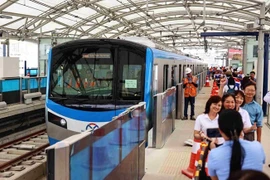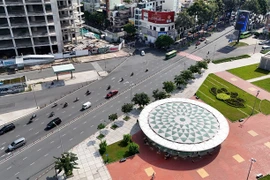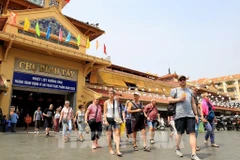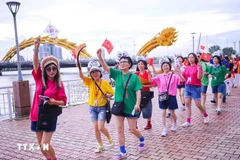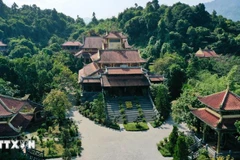HCM City (VNA) - The official launch of the first metro line in Ho Chi Minh City, which connects Ben Thanh Market in district 1 with Suoi Tien Theme Park in Thu Duc city, not only marks a significant milestone in its urban transport system but add a catalyst for the city’s stronger tourism development.
According to the city’s Department of Tourism, the Ben Thanh - Suoi Tien metro line which spans 19.7 km and includes 14 stations will help reduce traffic congestion while providing a new opportunity for exploring the city in a convenient and environmentally friendly manner.
This metro line links central areas with the eastern parts of the city, bringing tourists closer to many prominent attractions with rapid transit time and cost-effective travel options, along with a diverse range of unique experiences.
For instance, Ben Thanh station, located in district 1 in the city centre, is the perfect gateway for tourists to explore iconic landmarks such as Ben Thanh Market, the city Opera House, the headquarters of the People's Council and People's Committee, Nguyen Hue walking street, and the Museum of Fine Arts.
From Tan Cang station in Binh Thanh district, visitors can easily access Landmark 81, a symbol of the city in the modern era. Additionally, tourists can visit the Landmark 81 Skyview Observatory on the top three floors of the building to enjoy panoramic views of HCM City.
The metro line also connects many tourist destinations, including the Suoi Tien cultural tourism area, a recreational complex that blends traditional and modern values, famous for its long-standing cultural, historical, and spiritual sites, while continuously developing new attractions that align with the trend of experiential green tourism.
Notable cultural and historical sites include Hung Kings Memorial and Nguyen Huu Canh Temple, both located in the historical and cultural park in Thu Duc city, which are must-visit spots when exploring southern Vietnam.
Director of the HCM City Department of Tourism Nguyen Thi Anh Hoa said that the metro line is expected to be a lever for the city's tourism industry.
With convenient connections, tourists can easily access cultural, historical, and entertainment sites, providing a complete journey for both local residents and international visitors. Furthermore, the use of the metro contributes to reducing emissions, protecting the environment, and encouraging public transport habits.
In the city’s smart tourism development project for the 2020 – 2025 period, with a vision towards 2030, the city aims to establish a smart tourism system focusing on primary objectives such as enhancing visitor convenience, developing smart destinations, and creating a smart business ecosystem. This initiative involves proactively analyzing and forecasting demand, trends, and preferences to improve development strategies. Currently, the Department of Tourism has effectively implemented comprehensive digital transformation solutions, not only in management and governance but also in practical applications for promoting and attracting domestic and international tourists.
The city is expected to attract 6 million foreign visitors in 2024, a 20% increase compared to the previous year, achieving the set target. The number of domestic tourists to the city is projected to reach 38 million, up 8.6% year-on-year. Overall, total tourism revenue is estimated at 190 trillion VND (7.47 billion USD), an 18.8% increase from 2023, fulfilling the 2024 target.
Approved in 2007, the Ben Thanh – Suoi Tien metro line took 17 years to begin operations due to various reasons, including financial constraints, during its implementation.
With an investment of 43.7 trillion VND (1.72 billion USD), it spans 19.7km from Ben Thanh Market in district 1 with Suoi Tien Theme Park in Thu Duc city, and includes 14 stations, three of which are underground in the city's centre./.


